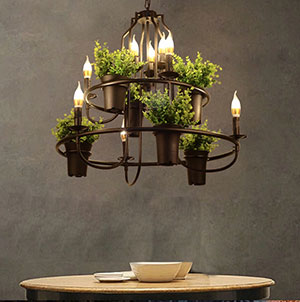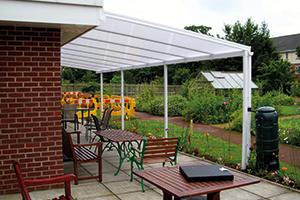With the summer in full swing and the recent pandemic situation, the need to spend time outdoors has never been so prevalent. We’ve therefore…
Inject new life into rooms with interior landscaping
Inject new life into rooms with interior landscaping: a cost effective way to refresh decor and increase physical and mental health
The benefits of keeping plants indoors have now been proven so many times that it is beyond any doubt houseplants bring very real, tangible advantages to anyone who has them around. And nowhere is this more evident than in a care environment. From hospitals and nursing homes to care homes for young and old alike, the addition of plants indoors will have an immediate impact on the physical and mental health of both residents and their careers. A a quick reminder, five of the most tested benefits are:
They help deter illness - outside, plant roots tap the groundwater table for water which then evaporates through its leaves, accounting for about 10 percent of the moisture in the atmosphere. This also happens indoors as plants are watered, which increases the humidity. Although this may sound unappealing, it’s an absolute gift if you live in conditions that are frequently heated or air conditioned. Studies at the AgricUniversity of Nrway document that using plants in interior spaces decreases the incidence of dry skin, colds, sore throats and dry coughs. And according to a new study from researchers at the Centers for Disease Control and Prevention, higher absolute humidity is conducive for decreased survival and transmission of the flu virus.
They aid easier breathing - Adding plants to interior spaces increases oxygen levels. At night, photosynthesis stops and plants typically start breathing like humans, absorbing oxygen and releasing carbon dioxide. However there are some plants –orchids, succulents and epiphytic  bromeliads – which actually do the opposite, taking in carbon dioxide and releasing oxygen. Strategic placing of these plants in bedrooms can refresh air during the night.
bromeliads – which actually do the opposite, taking in carbon dioxide and releasing oxygen. Strategic placing of these plants in bedrooms can refresh air during the night.
They are a natural air purifier - one of my favourite houseplant benefits is that they actively remove toxins from air. NASA has researched it extensively and revealed that up to 87% of volatile organic compounds (VOCs) every 24 hours are processed. VOCs include substances like formaldehyde (present in rugs, vinyl, cigarette smoke and grocery bags), benzene and trichloroethylene (both found in man-made fibers, inks, solvents and paint). Our climate-controlled buildings (which are now air tight too) trap VOCs inside. The NASA research showed that plants purify this trapped air by pulling contaminants into soil, where root zone microorganisms convert VOCs into food for the plant.
They boost healing - A study conducted at Kansas State University found that viewing plants during recovery from surgery led to a significant improvement in the body’s responses including lower blood pressure, and lower ratings of pain, anxiety, and fatigue as compared to patients without plants in their rooms. Another technique to decrease recovery time which was recorded by Texas A&M University, is horticulture therapy in which patients are tasked with taking care of plants. The patients who physically interacted with plants experience a significantly reduced recovery time after medical procedures.
They can sharpen your focus - A study at The Royal College of Agriculture in Circencester found that students showed a 70% greater attentiveness when taught in a room containing plants. In the same study, attendance was also higher for lectures given in classrooms with plants.
We’ve known about the benefits of keeping plants indoors for many years, but it’s only recently that interior landscaping has really exploded in the residential and commercial space. Some of the current trends can be easily adopted by a care home and not only provide the many benefits above but also add an incredibly stylish touch to the interior design of a space. In some cases totally transforming rooms with some well thought out touches that don’t break the bank! Some of my favourite tricks include:
Living walls or vertical gardens - When space is at a minimum vertical planting can look absolutely amazing. And in a bedroom setting, the introduction of easy to look after succulents also purifies air and helps residents sleep better. They don’t need to be particularly large, covering an entire wall. A vertical garden can look equally stunning with an indoor trellis and pot combination, or a display of hanging planters and pots.
Living pictures - A relatively new idea, specially adapted picture frames can be planted up into a gorgeous living canvas. Watering is also easy as they can be removed once a week and placed on a table, watered and rehung.
Living light fittings - If you really want to make a statement, give a living light fitting a go! A truly unique alternative to a chandelier (and a zillionth of the price!). Design-led light bulbs can be hung from the ceiling, surrounded by a pot system that contains hanging succulents. When the lights are off they look extremely eye catching and when the lights go on, positively theatrical!
Creative pot displays - A few large, well placed planters and pots that pick up a room’s colour scheme is a simple yet hugely effective touch that will brighten and calm an environment immediately. You can be as creative or simple as you like and the beauty of a pot is that it can be moved.
Living table tops - old tables that have glass on top of a lower section, provide a perfect and very original way to plant dwarf houseplants. Visible through the glass they can offer endless interest as they grow and change over time.

Amanda Lorenzani is a garden designer and interior landscaper working across London, Sussex and the South East.
www.instagram.com/amandalorenzani
amanda.lorenzani@gmail.com
Tel: 07900 255 970





